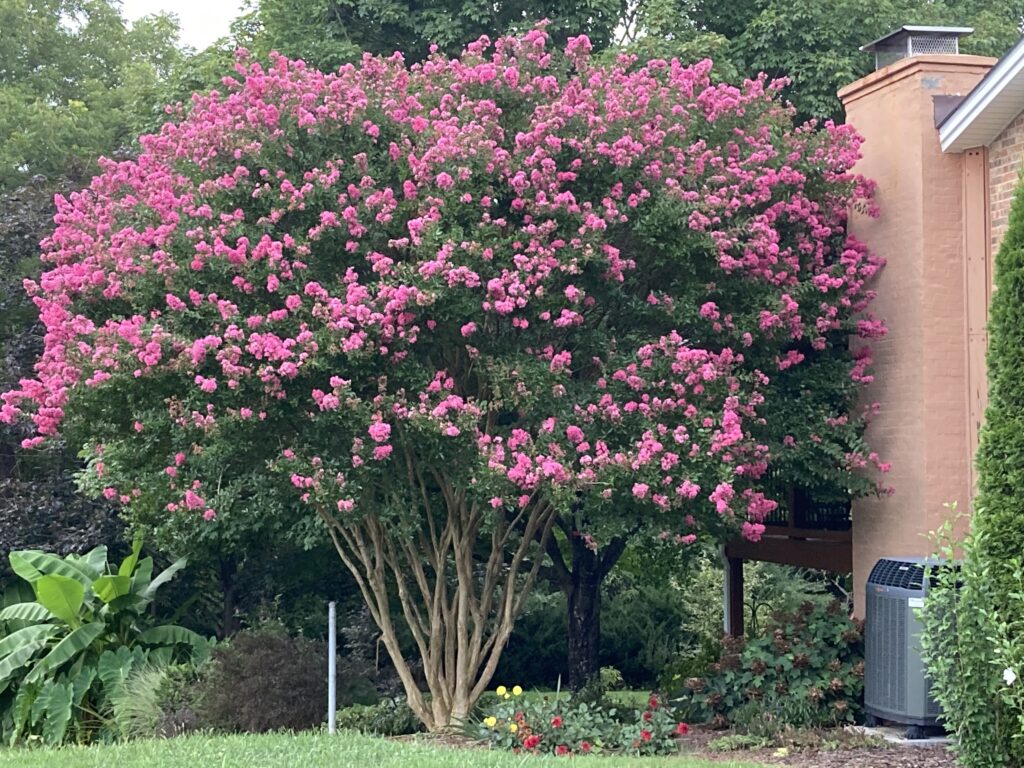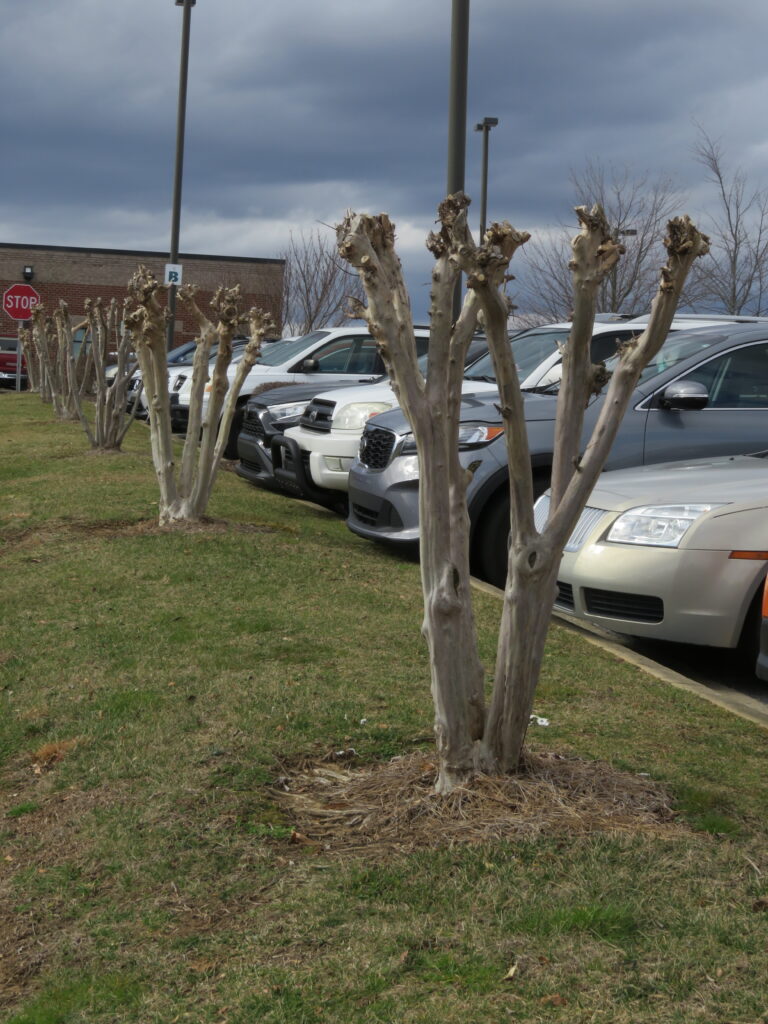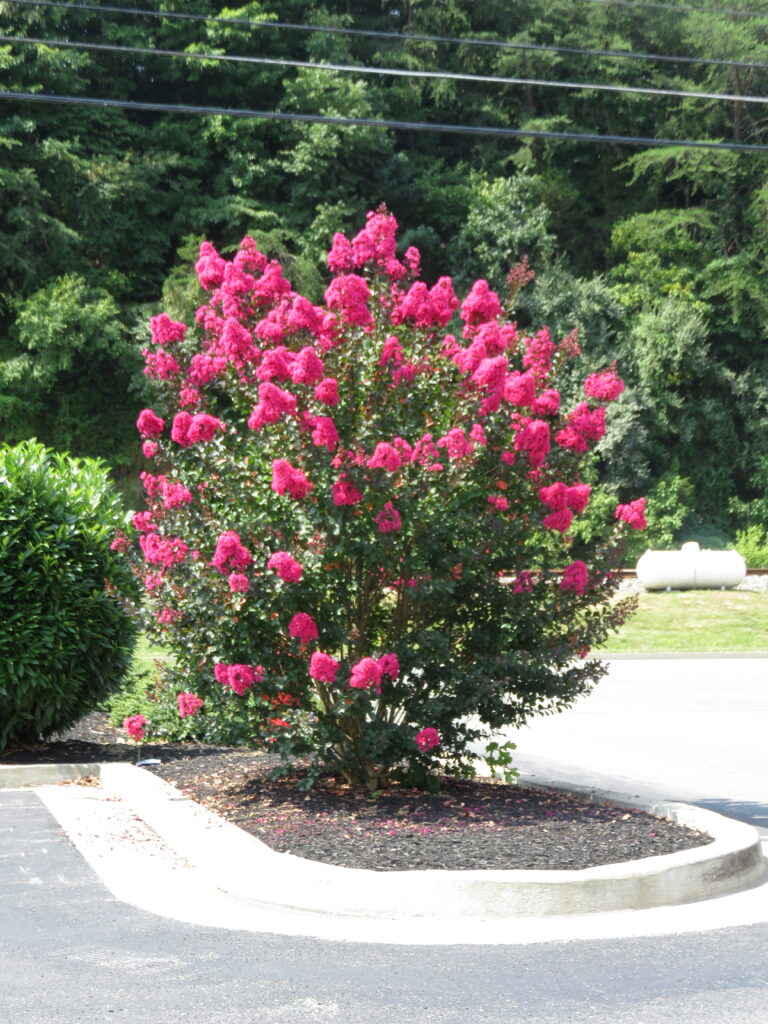
No flowers On Your Crape Myrtles? Look at these five common problems:
1. Not Adequate Sunlight
Crape myrtles need 6-8 hours of full sun a day. Too much dry heat will cause poor flowering as well as leaf scorch.
2. Too much /Too Little Soil Moisture
Crape myrtles are tolerant of moderate drought, dry weather spells lasting 2-3 weeks. They bloom poorly if planted in wet soggy soils. but coping with prolonged drought can be at the expense of flowering ability. Mulching with composted bark or wood chips aids to conserve soil moisture.
Water crape myrtles deeply and at 7–10 day intervals until rains return. Irrigate the tree root zone and not overhead to avoid fungal leaf diseases.
3. Fertilize Crape Myrtle
If crape myrtles are not blooming or producing only a few flower clusters, they may be nutritionally hungry. Similarly, excessive fertilizing can actually delay blooming or cause fewer blooms than normal. The culprit here is usually too much nitrogen in the soil. This will cause your Crape Myrtle to grow lots of shoots and leaves, often at the expense of blooms.
Feed your crape myrtles, but don’t overfeed. Spread 2-3 handful of an all-purpose fertilizer like a 5-10-5 that is low in nitrogen. A crape myrtle planted on your lawn may be receiving too much high nitrogen. Or the lawn grass may be absorbing the fertilizer and the crape myrtle may be starved of nutrients.
4. Poor Pruning Of Crape Myrtles is a key reason why the crape myrtle is not blooming. Has a landscape company or you have committed “Crape Murder” by severely cutting them back to 5-8 feet? This is butchering your tree or shrub. Crape myrtles need very little annual pruning other than clipping off the old flowers and seedheads.

Severe cutting back crape myrtles destroys their natural look. New willowy shoots sprout from the stumps in spring; sprouts are generally too weak to hold new flowers. Also, bloom numbers are fewer. Crape myrtles need very little pruning. In late winter you may choose to prune away dead, diseased, weak or crossing branches.
5. Select The Right Variety For Your Landscape
Measure the planting site (height and width) before purchasing a crape myrtle. Select the correct variety that will best grow into the space. This will reduce also annual maintenance, particularly the need to prune.
Some of the best crape myrtle cultivars are ‘Natchez’ (white blooms), ‘Acoma’ (white), ‘Muskogee’ (light lavender), ‘Dynamite’ (red), ‘Zuni’ (medium lavender), ‘Hopi’ (pink), and ‘Sioux’ (clear pink). All seven cultivars display high mildew-resistant varieties. Finally, choose a variety that is hardy, disease-resistant, and matches your desired height and color.

Several of these factors may be inter-related — 1. soil moisture and fertility and 2. sun/shade and pruning. Crape myrtles are best grown in USDA hardiness zones 6b to 9.

 Posted in
Posted in 
